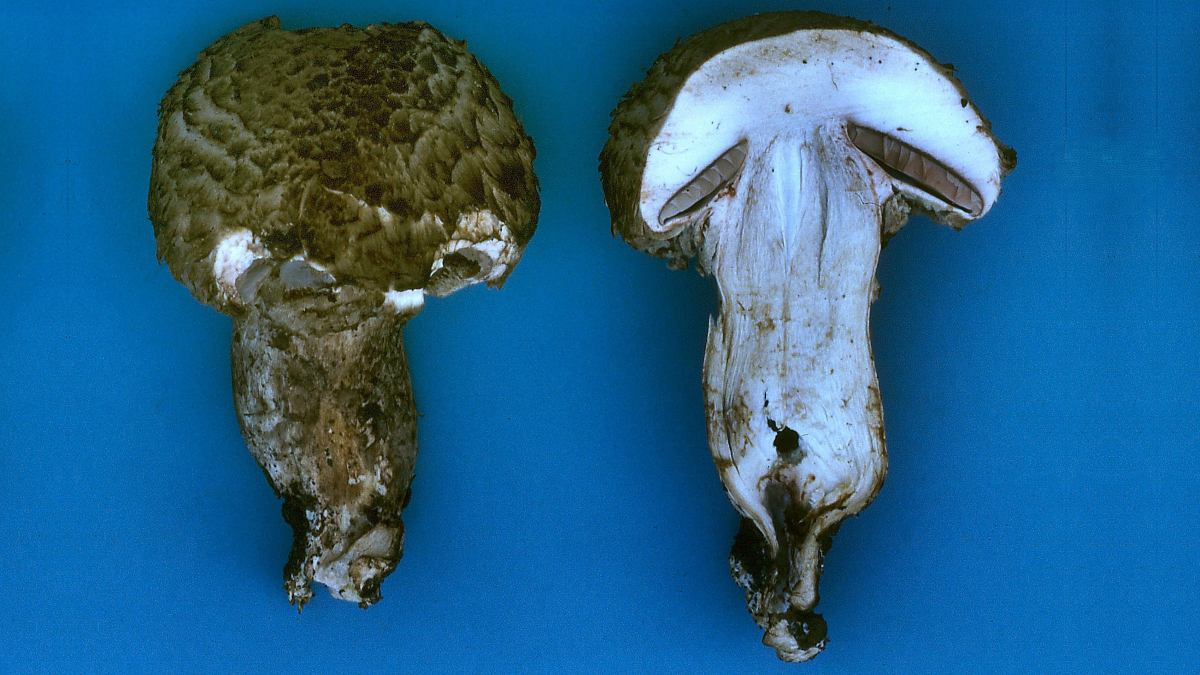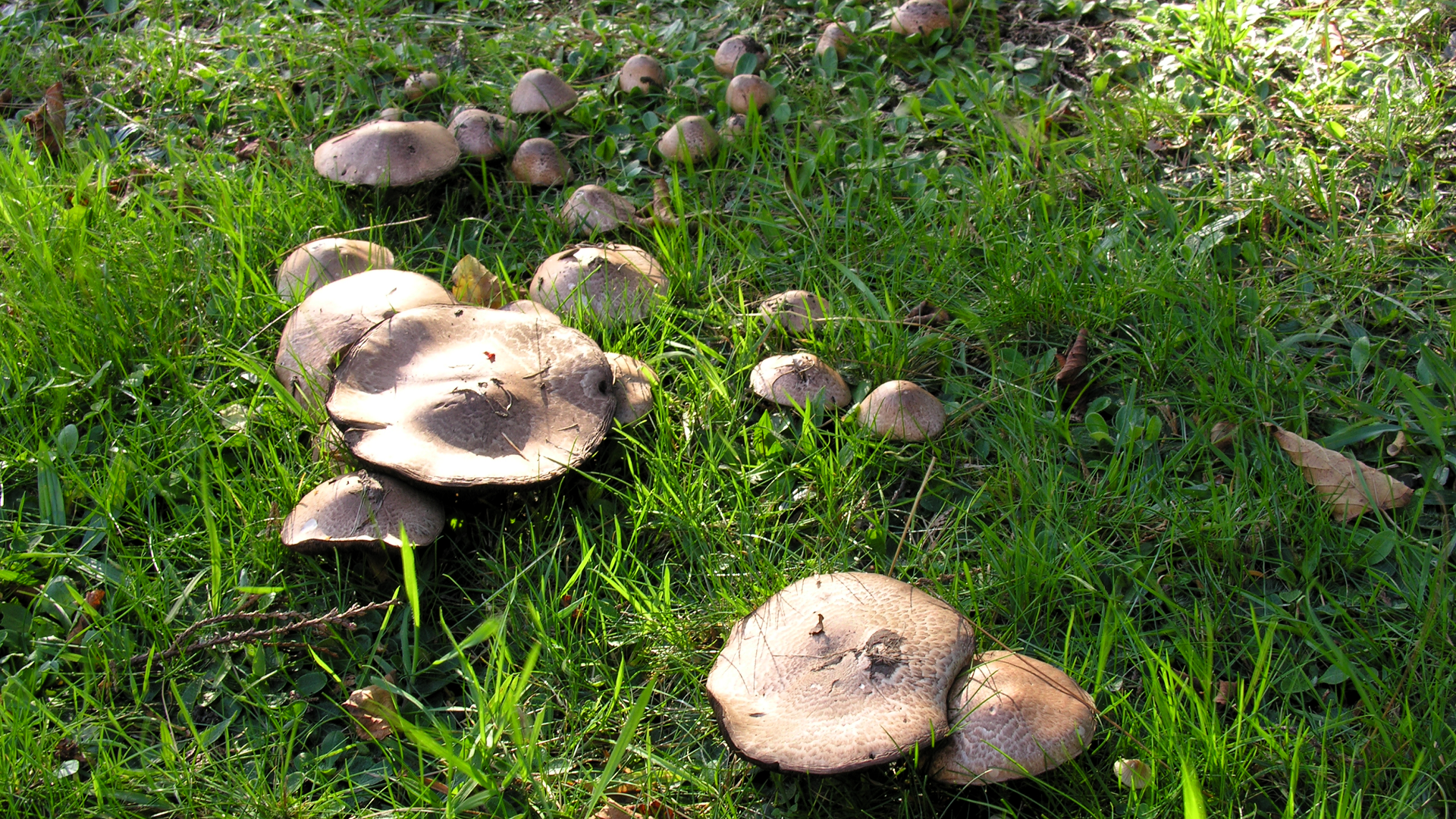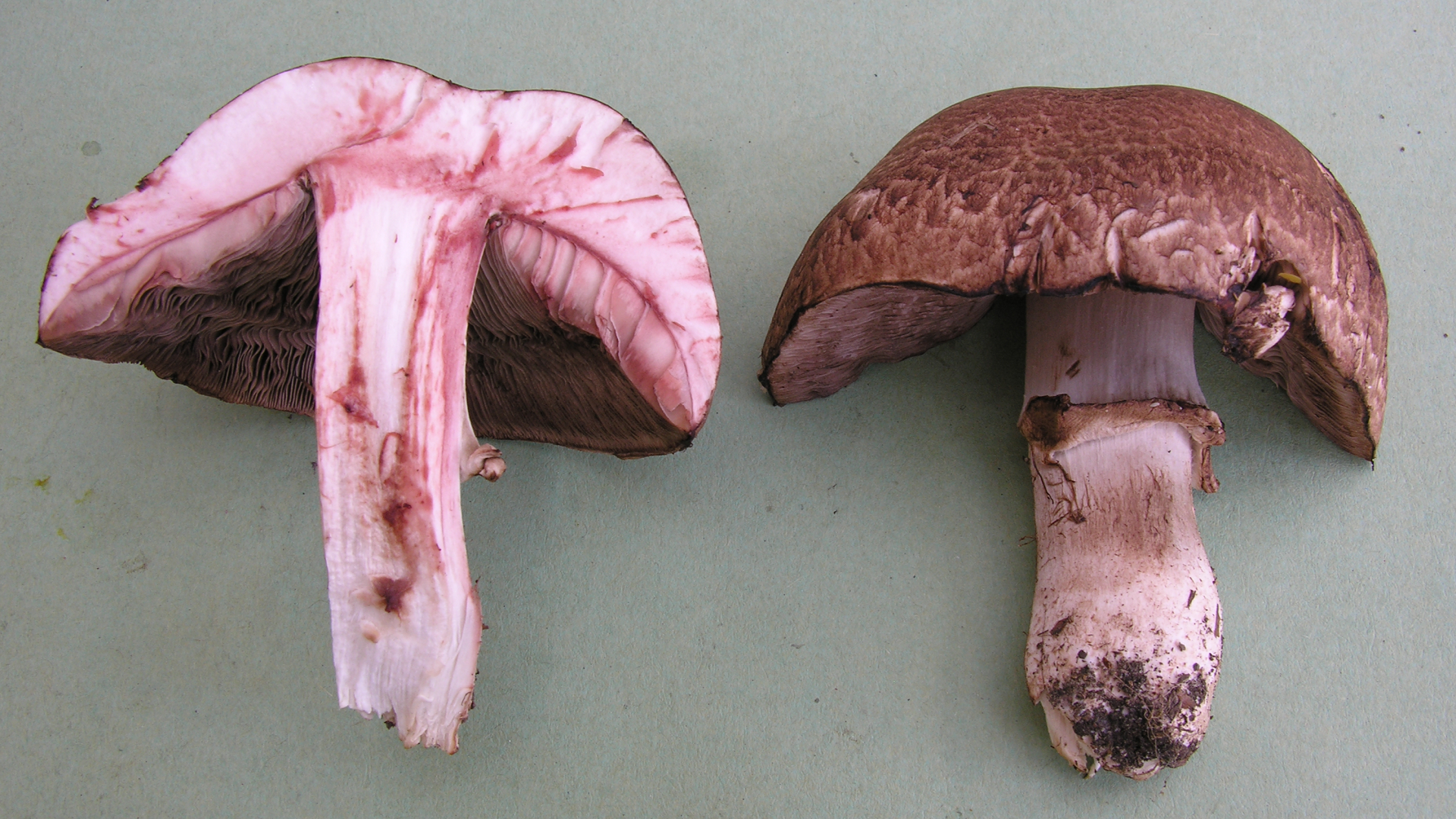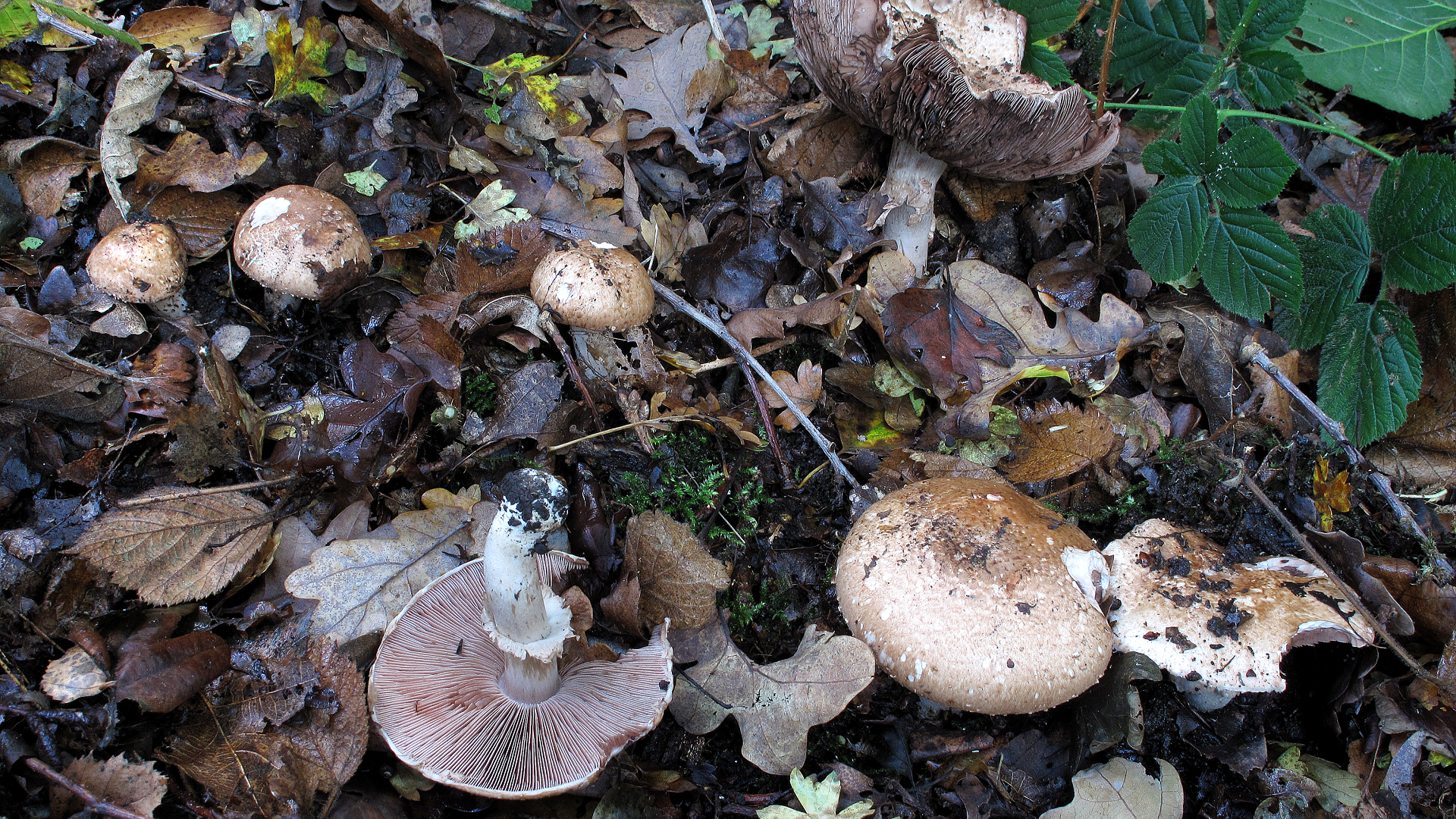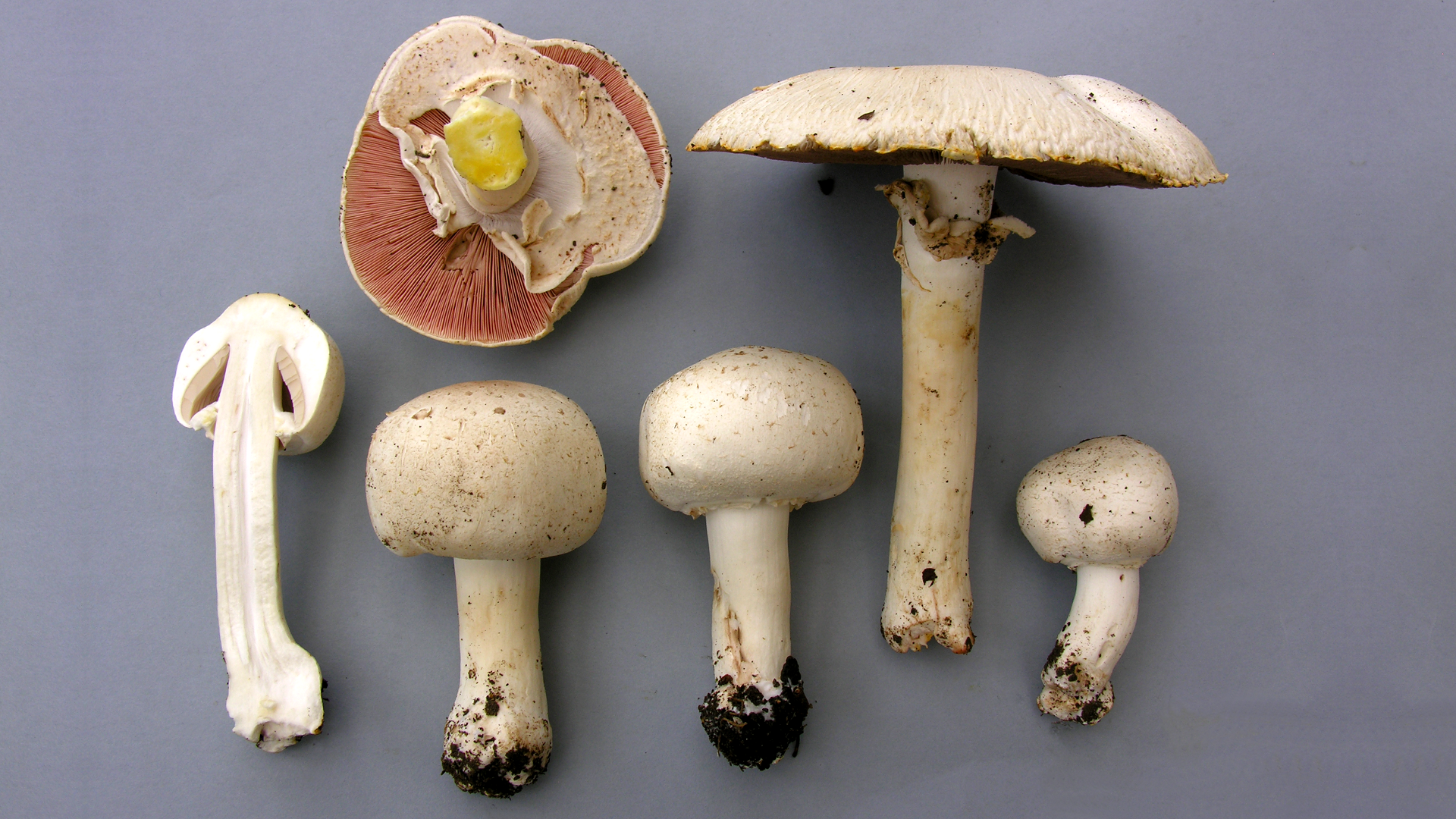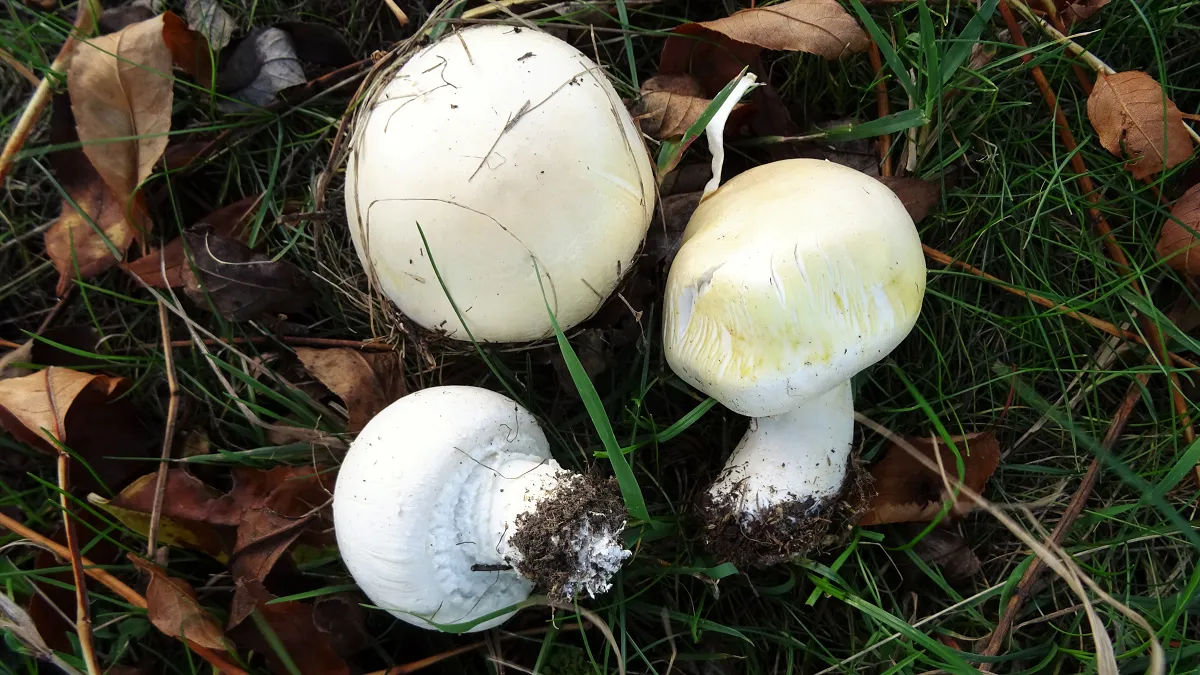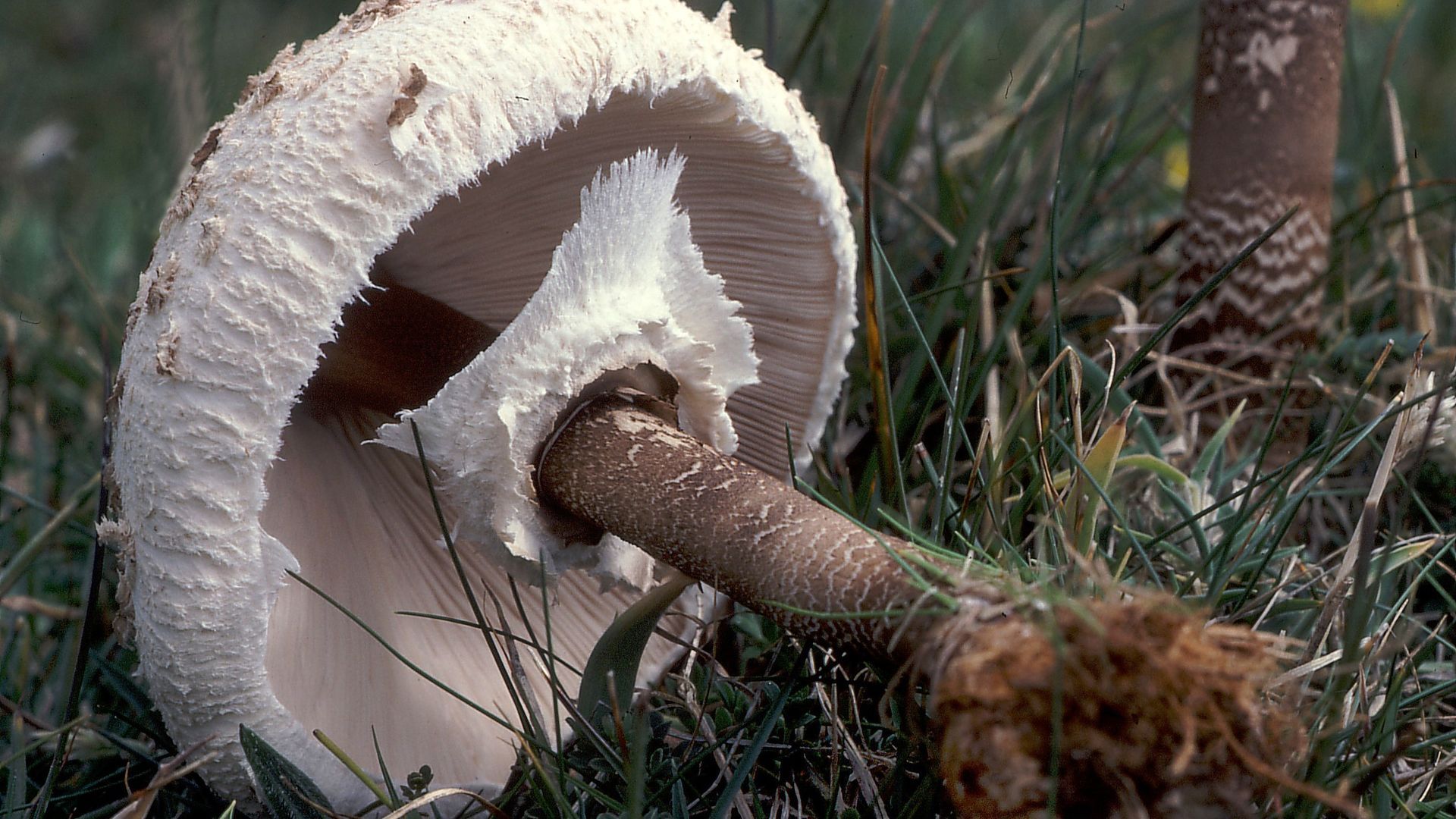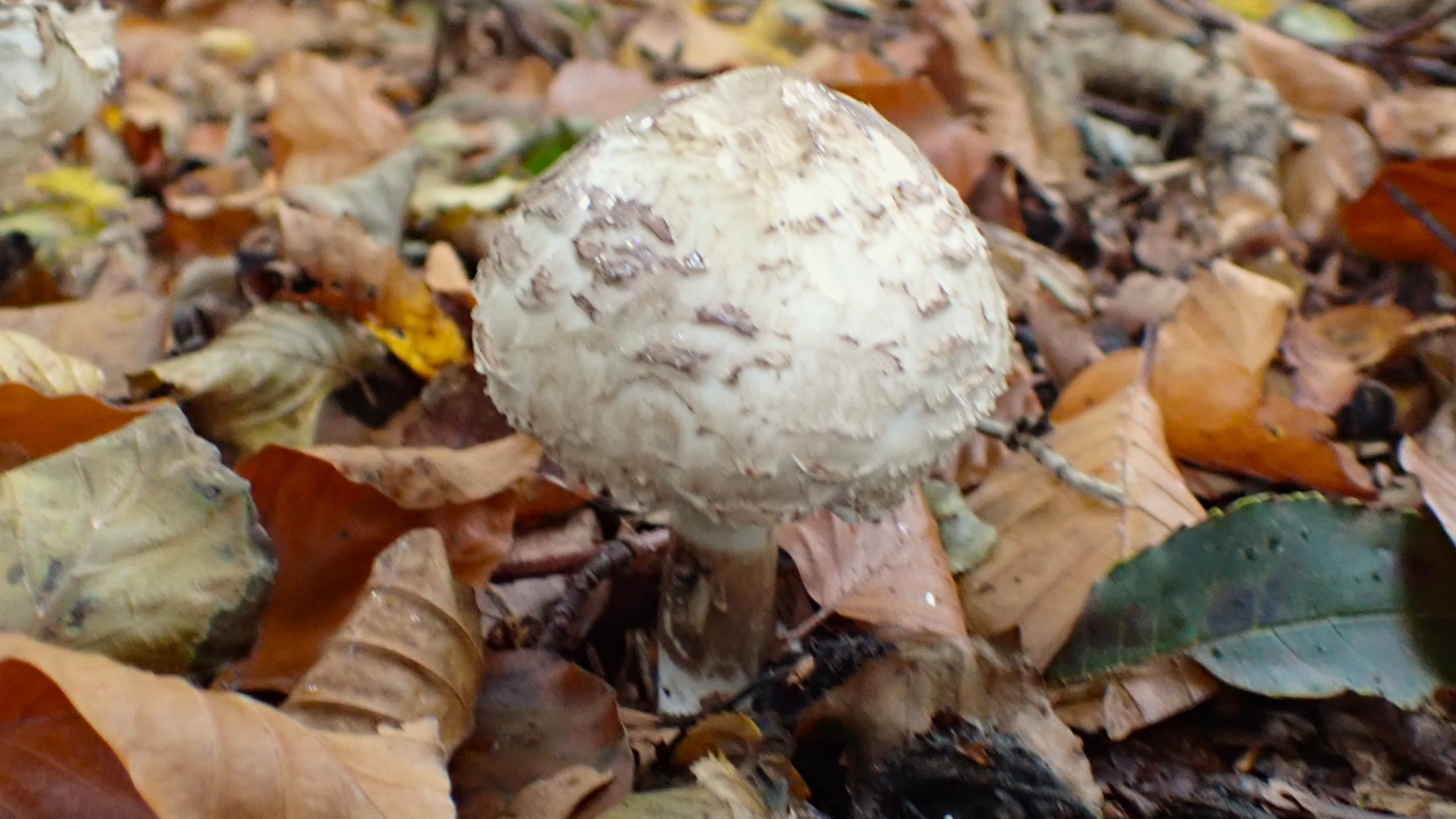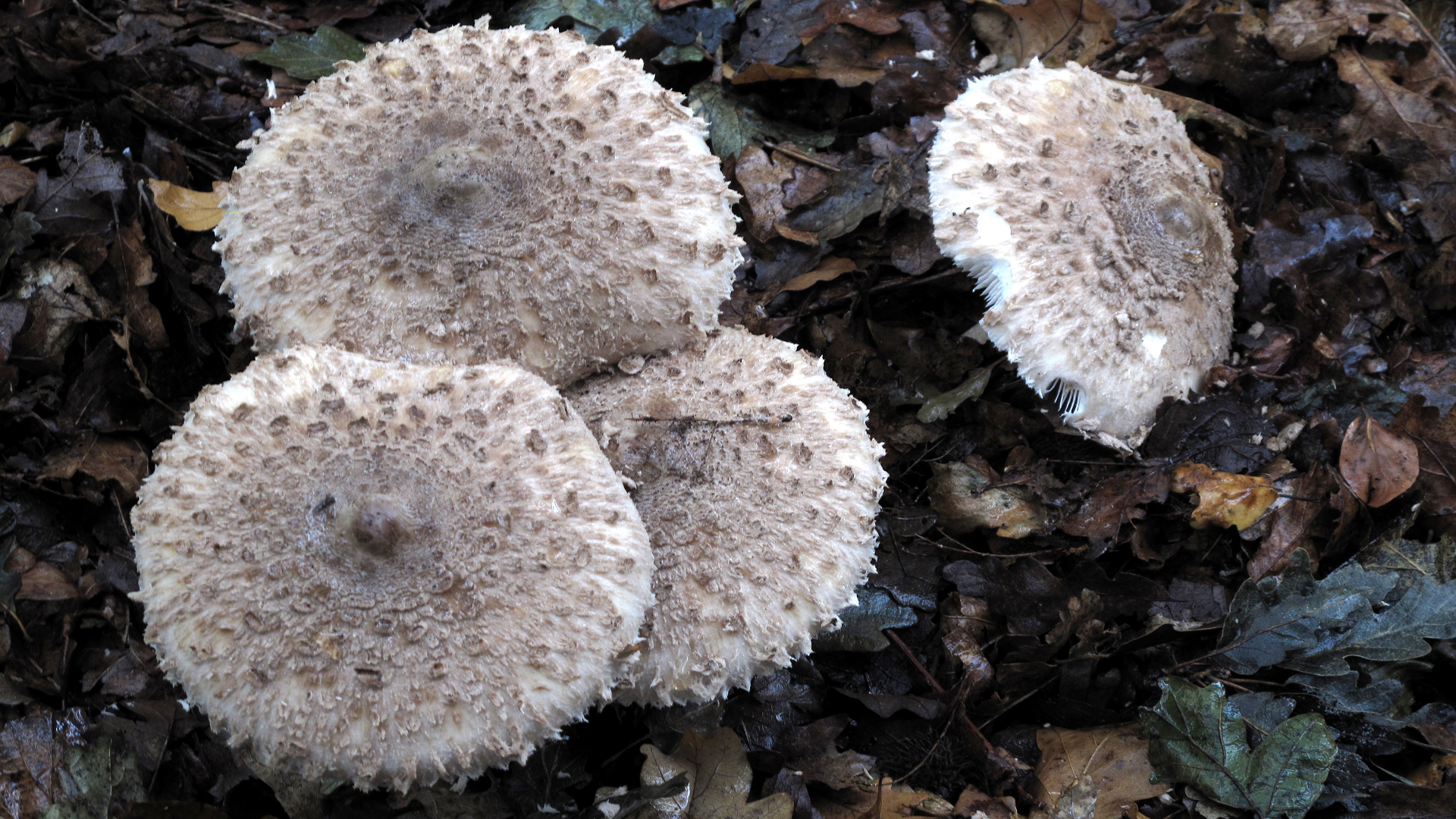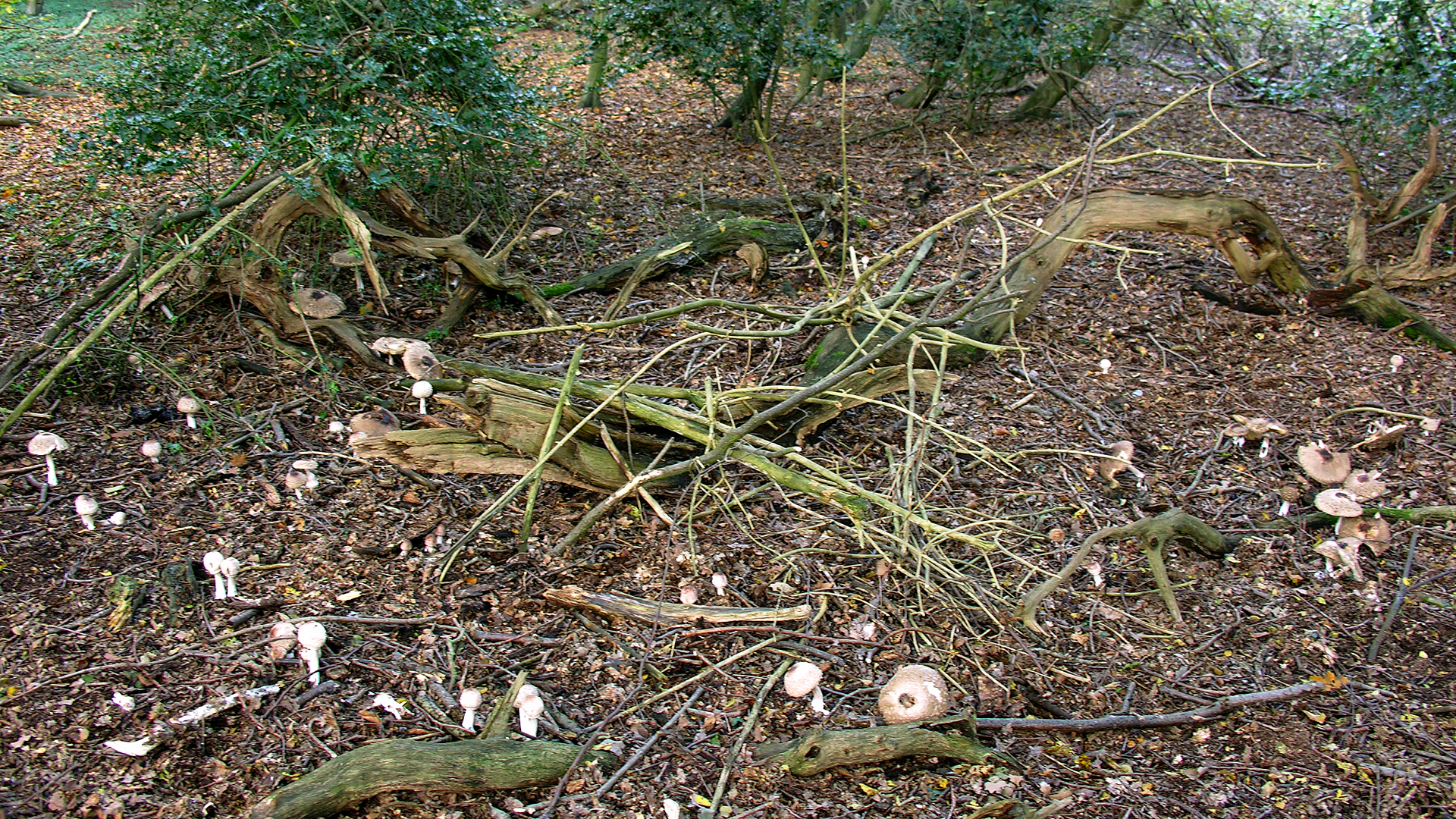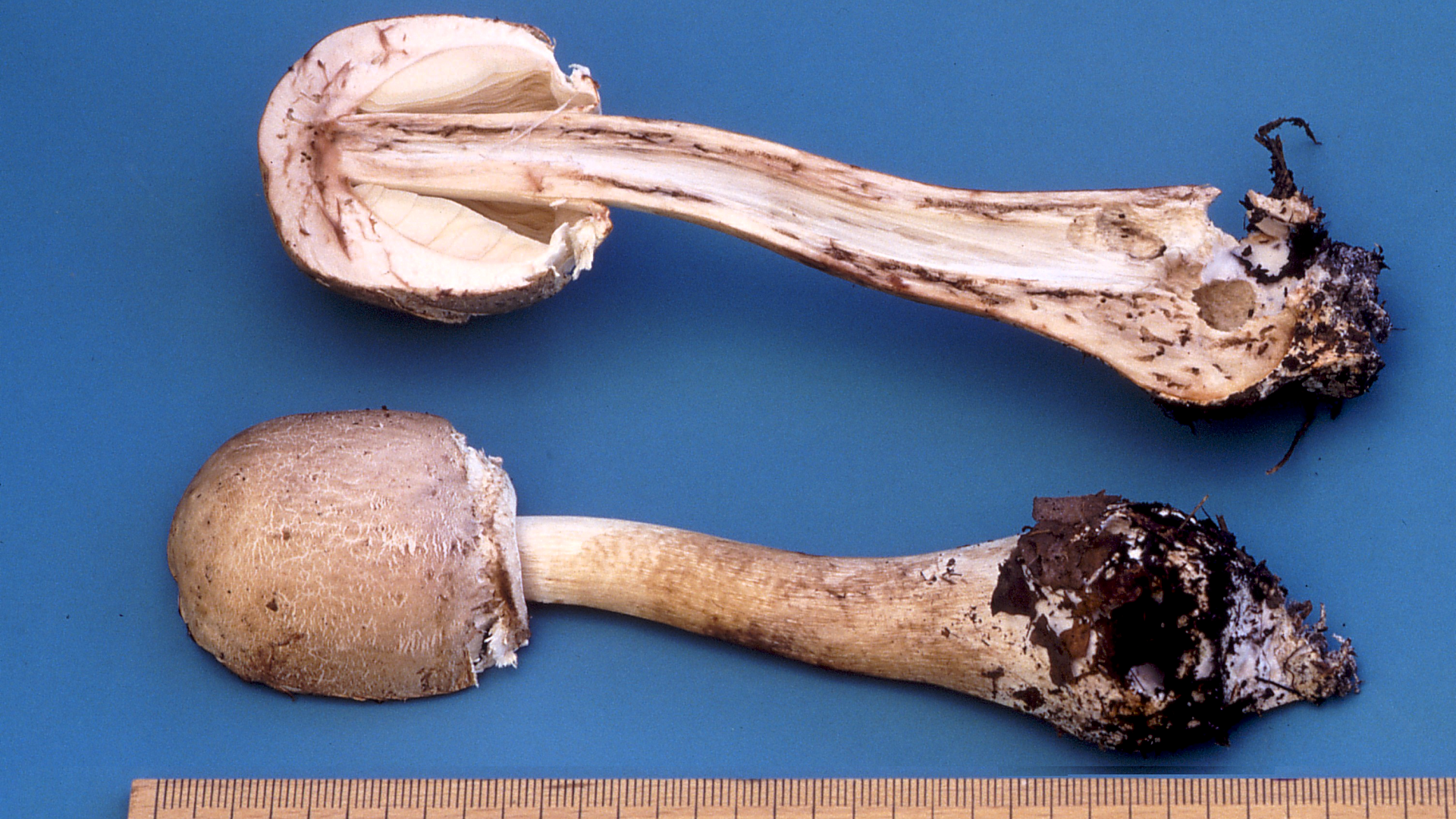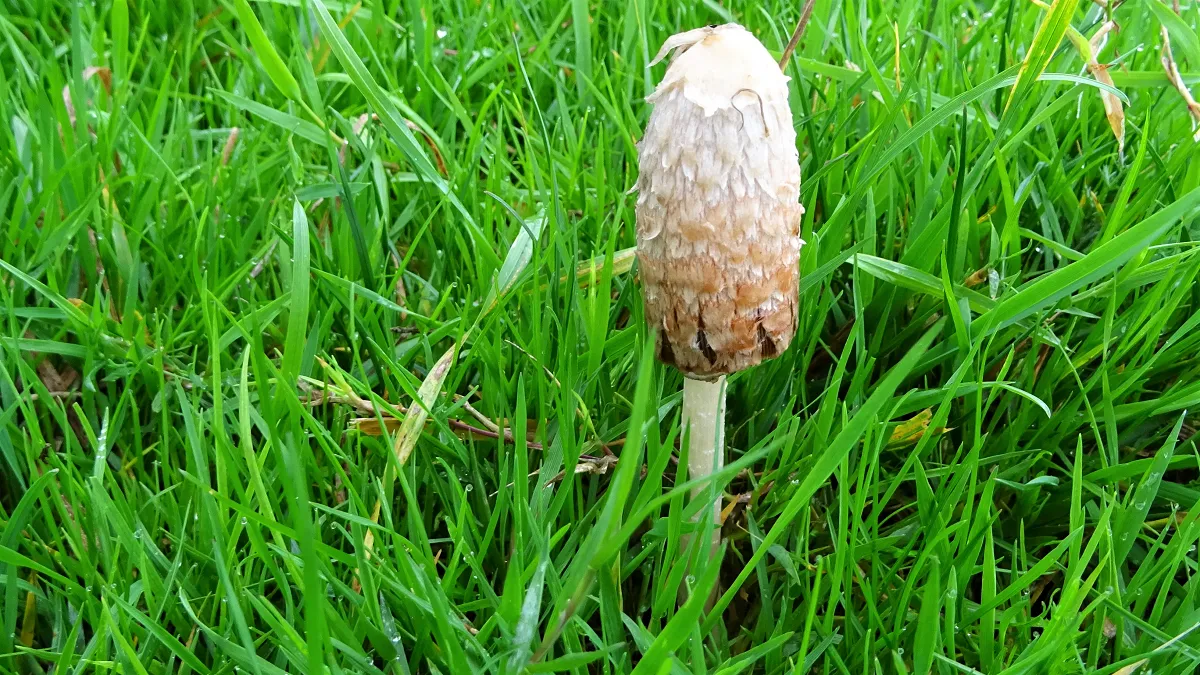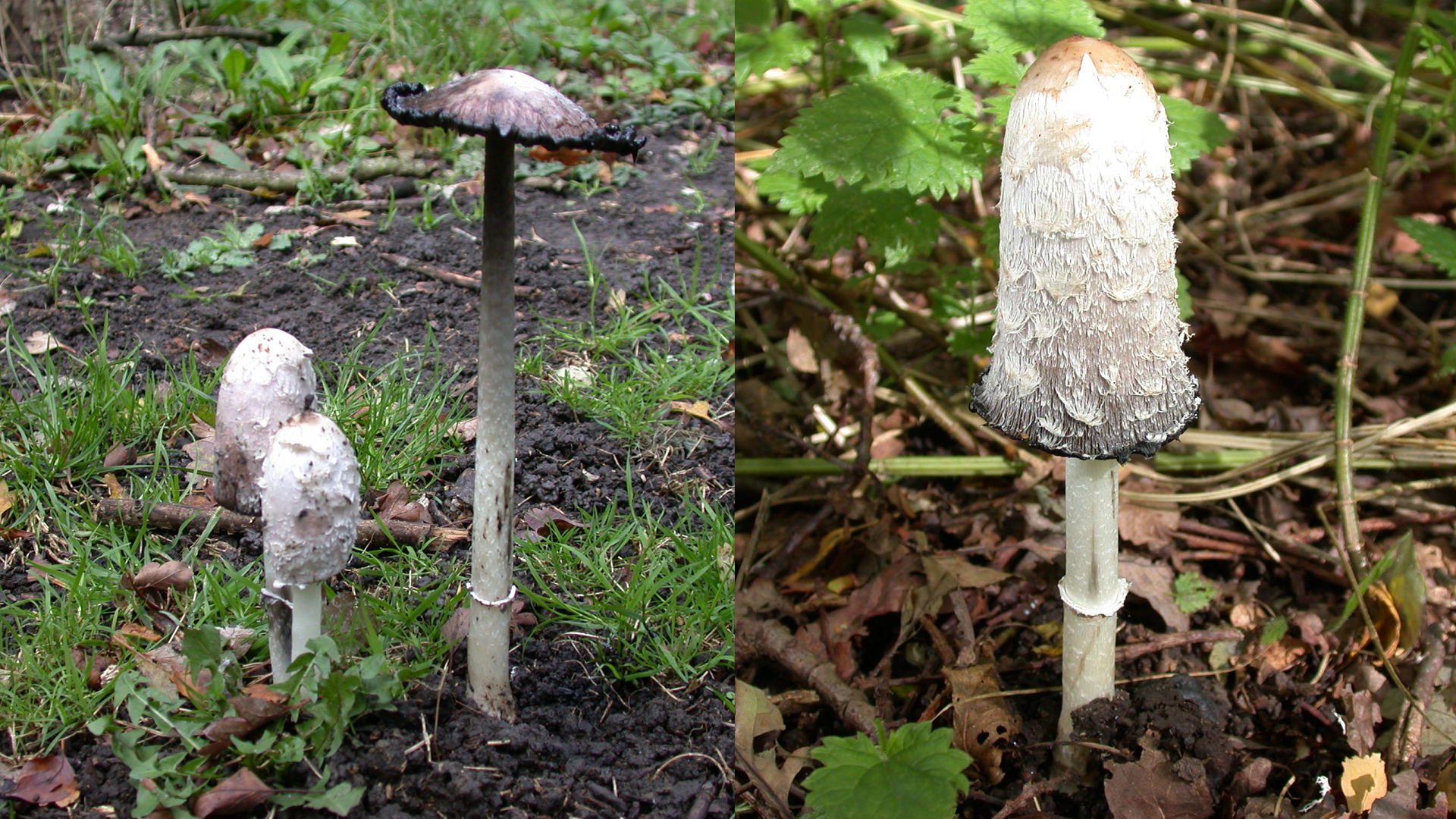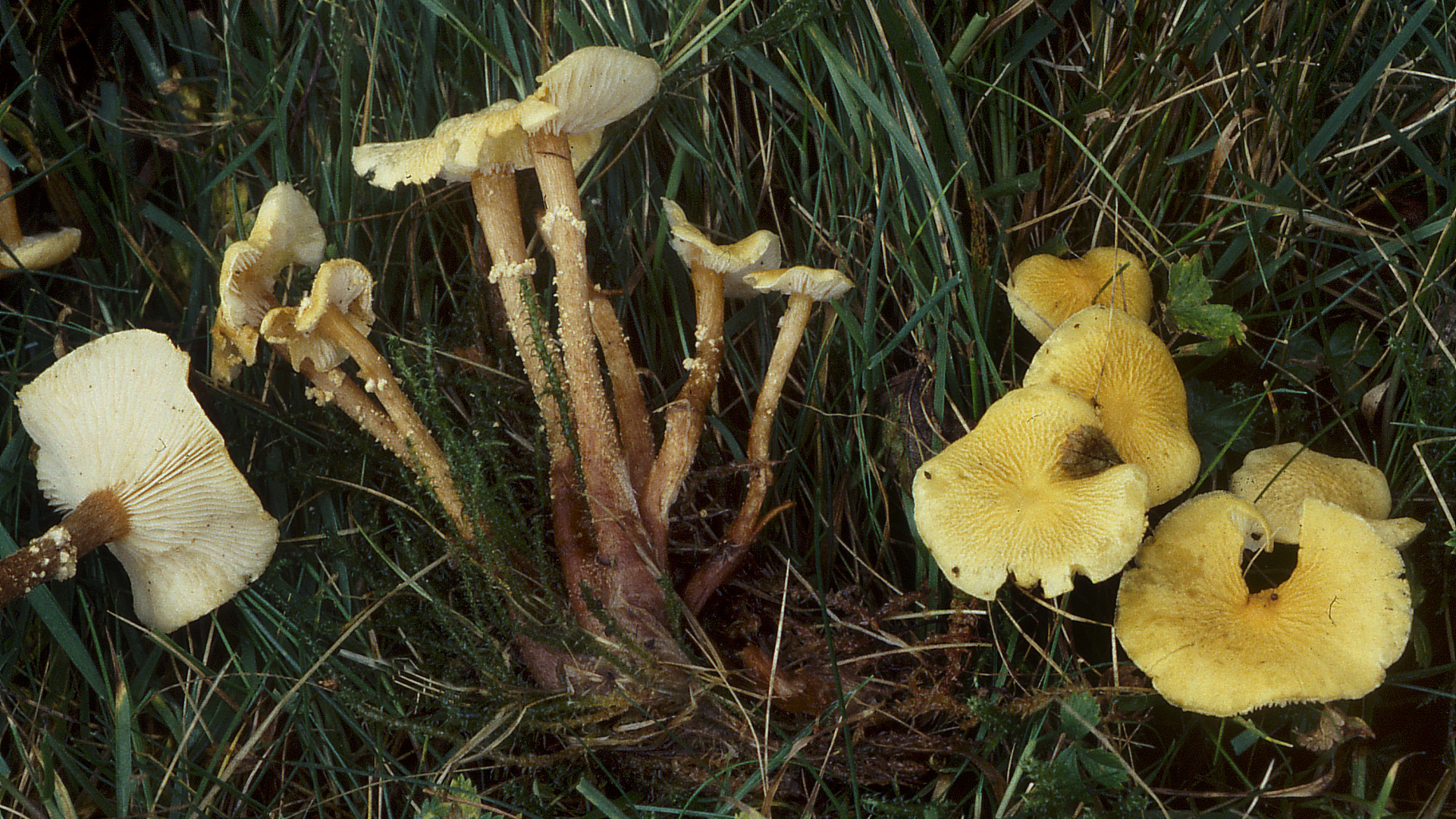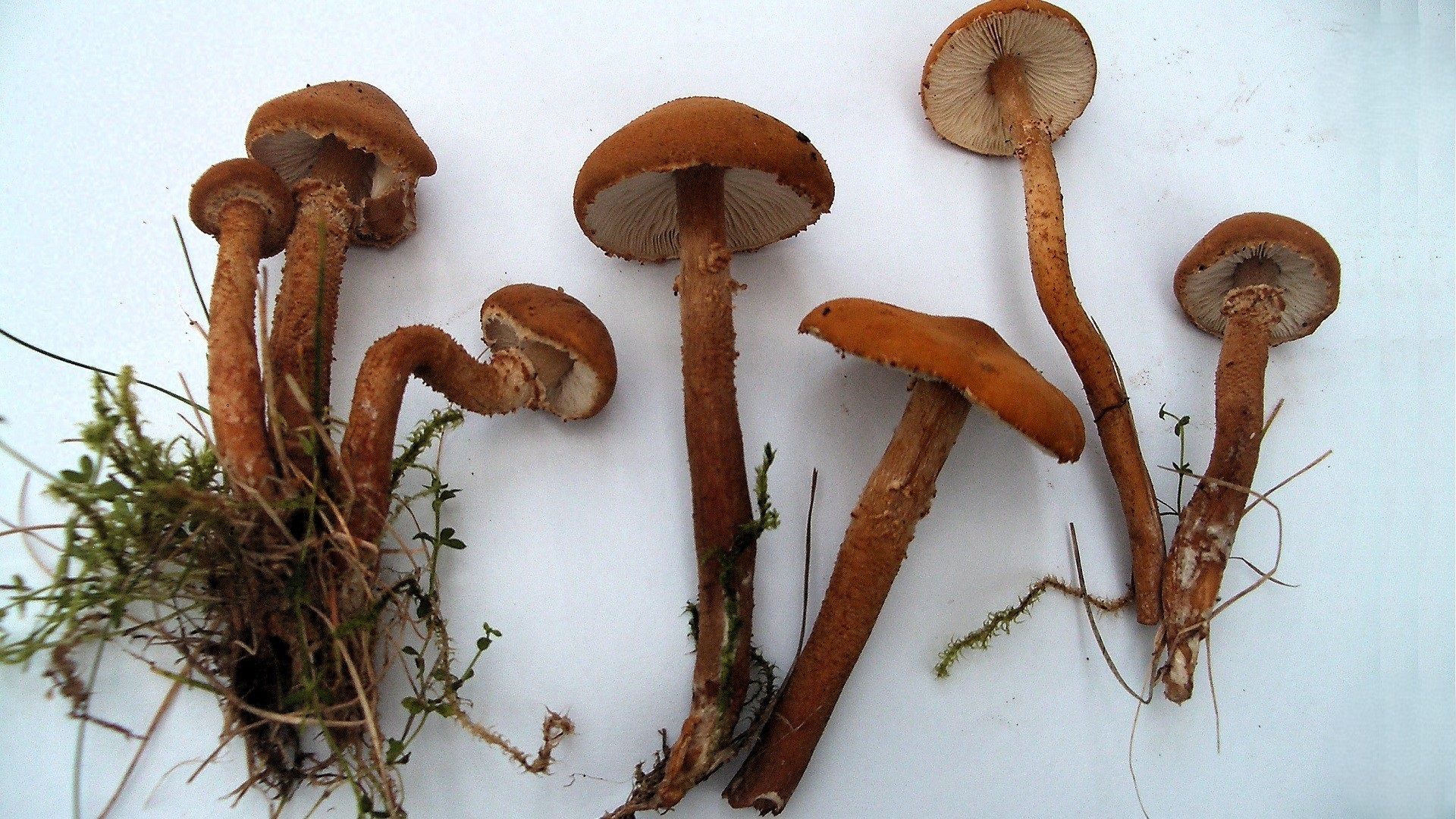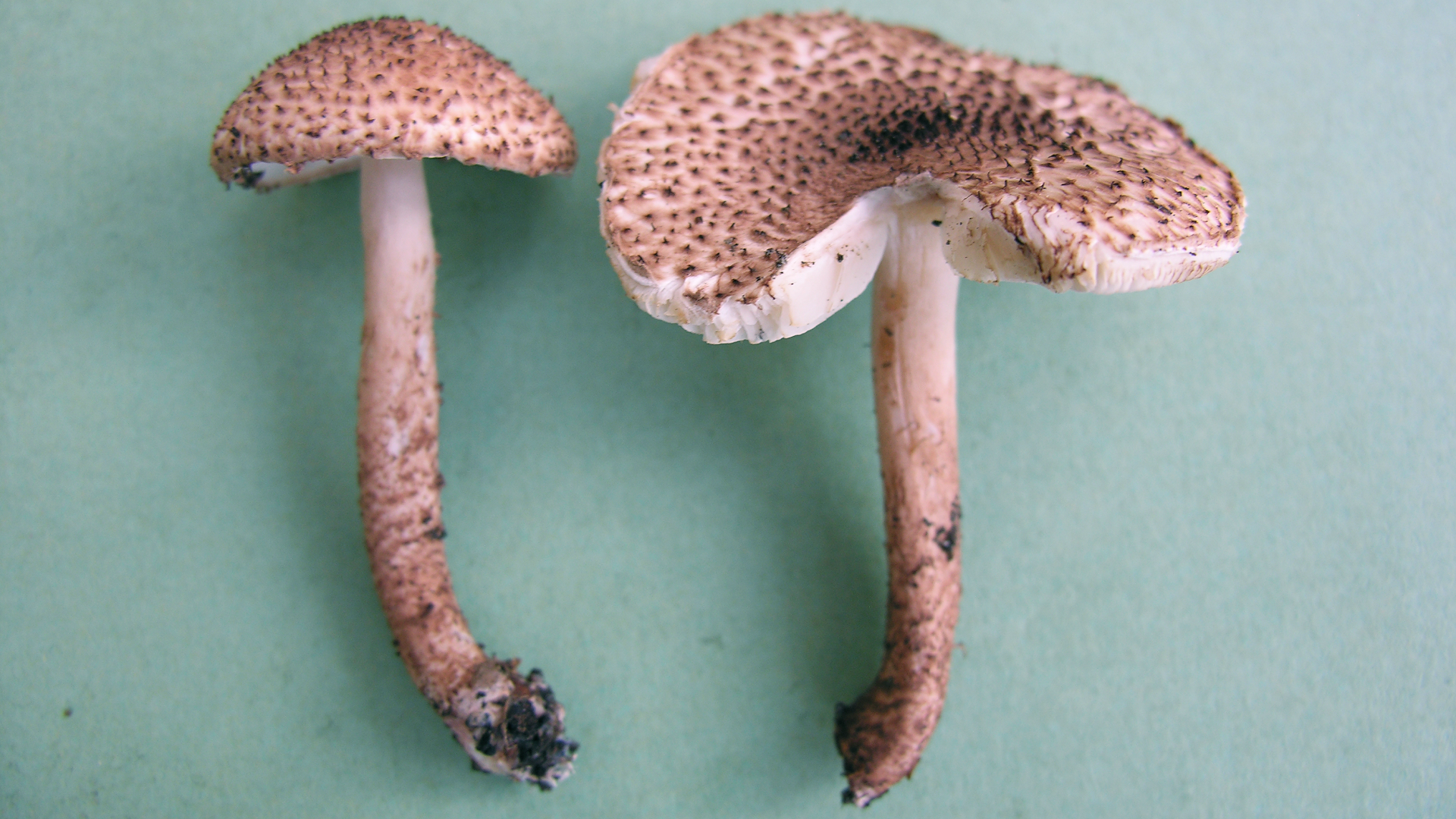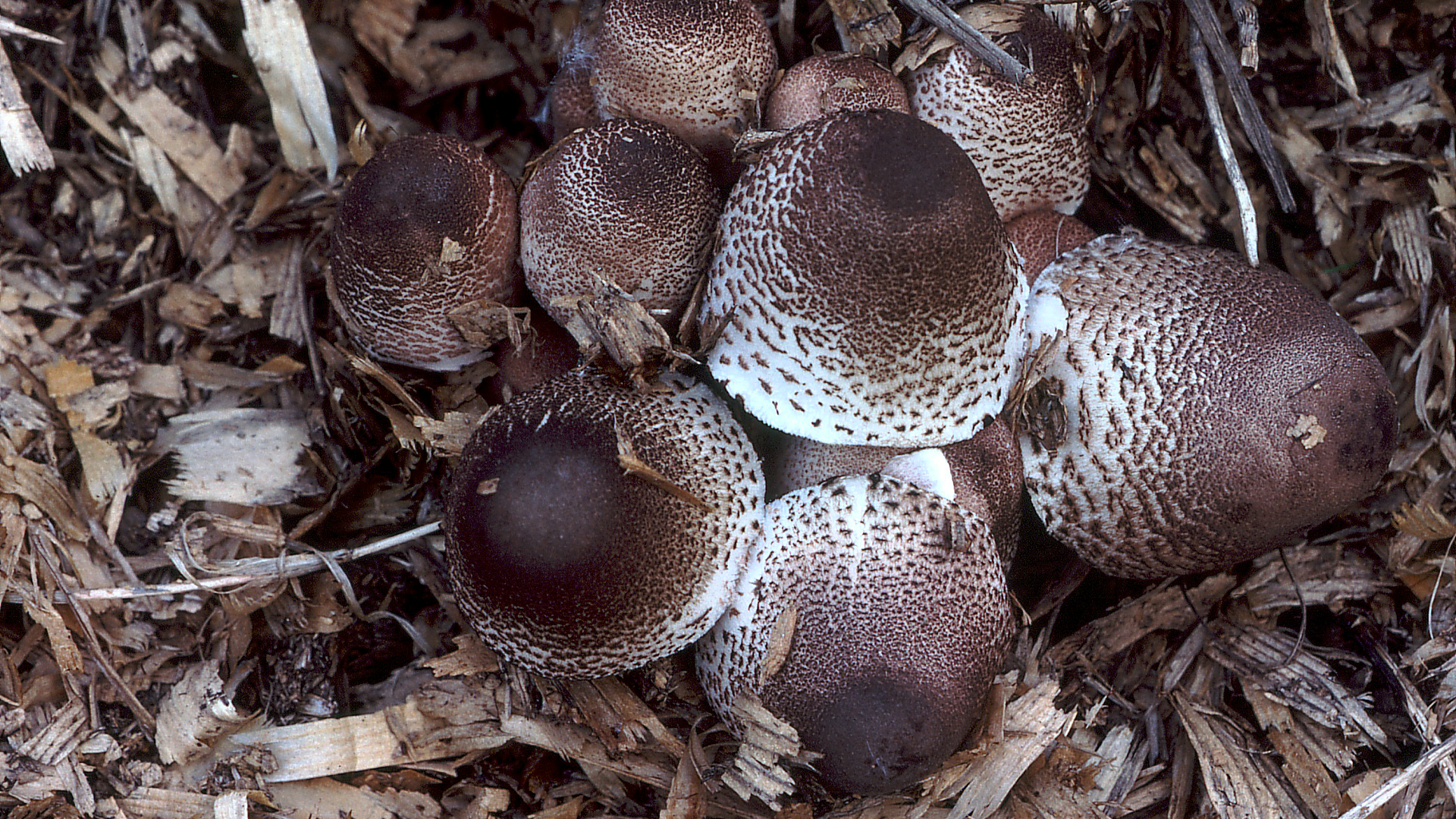Fungi Foray
AGARICACEAE
The Princess
Agaricus lanipes
Grows in earth and leaf litter under broadleaved trees.
AGARICACEAE
Blushing Wood Mushroom
Agaricus silvaticus
This species has a greyish-brown cap (10cm dia.) covered with broad scales, initially hemispherical, the cap flattens out with maturity. The brownish stipe often has a hanging ring. The white flesh turns reddish when cut. Found in leaf litter and on grass.
AGARICACEAE
Yellow Stainer
Agaricus xanthodermus
Saprobic mushroom, associated with hawthorn, found in disturbed grassland during summer and autumn. The cap, 50-150mm across, is globose, often with flattened top, becoming broadly convex. The cap is matt white before greying, it stains yellow when cut or damaged. The smooth and silky stipe, 150mm long, has a bulbous base. There is a large, white, ring that persists with age. Gills are free and off-white, then pink and grey-brown. Dark brown spores.
AGARICACEAE
Shaggy Parasol
Macrolepiota rhacodes
Normally has a stockier appearance than the Common Parasol. The rounded white cap flattens and has dark brown scales giving it a 'shaggy' look. The flesh bruises red when damaged.
AGARICACEAE
Shaggy Inkcap
Coprinus comatus
Found in grassy locations.
AGARICACEAE
Earthy Powdercap
Cystoderma amianthinum
An occasional find in grassy areas in woodland.
AGARICACEAE
No Common Name
Lepiota hystrix
A rare find in Oak Quercus woodland.
AGARICACEAE
No Common Name
Leucoagaricus meleagris
A very rare fungus found in animal bedding and wood chips.
© hainaultforest.net. All rights reserved.


